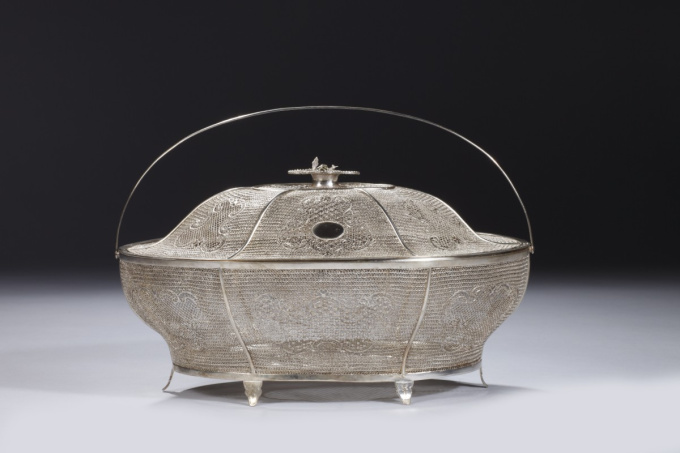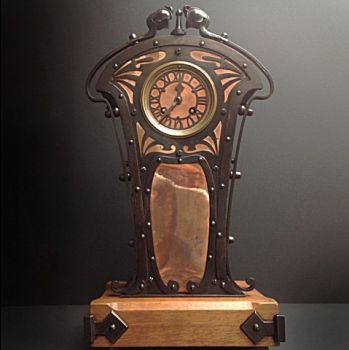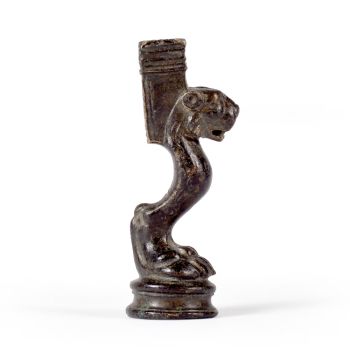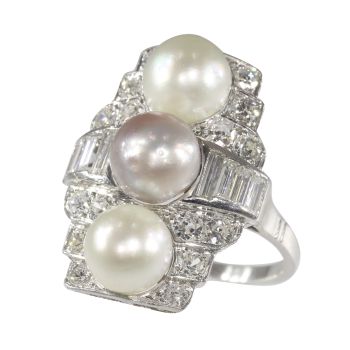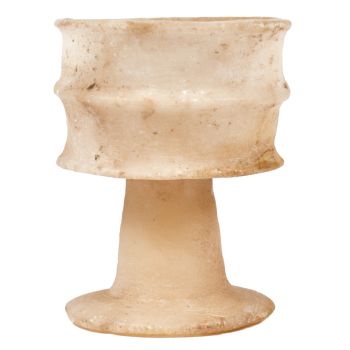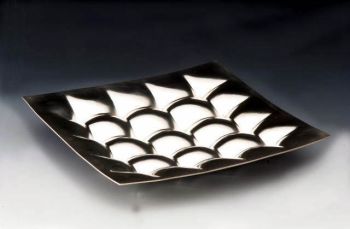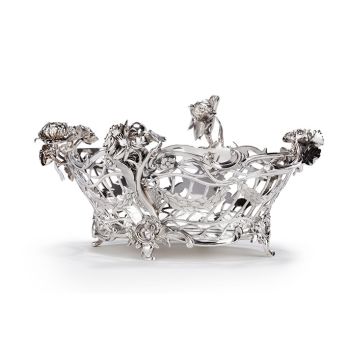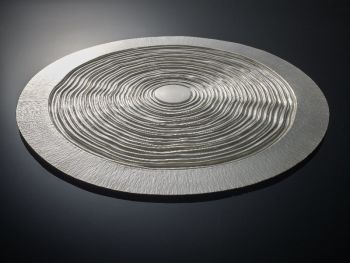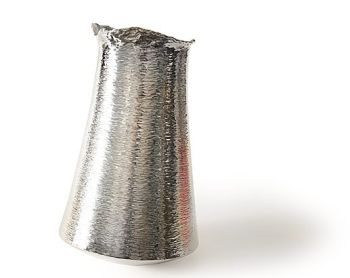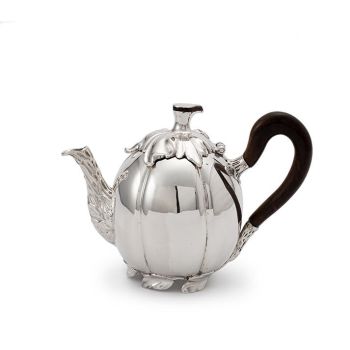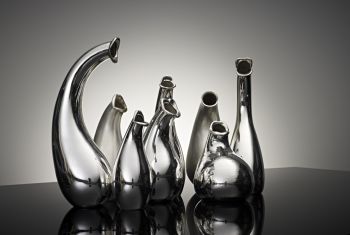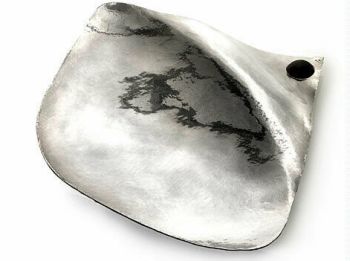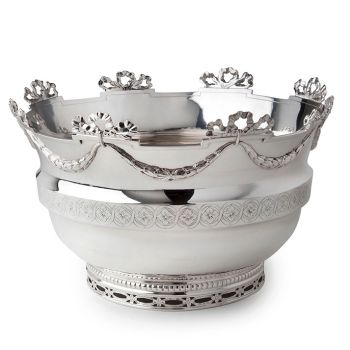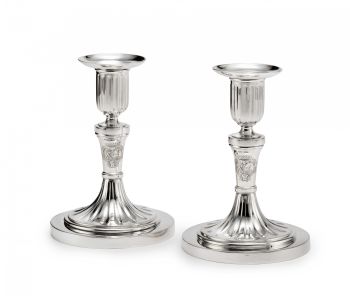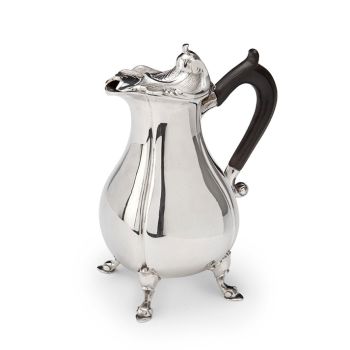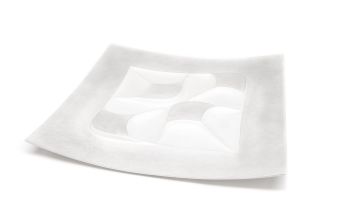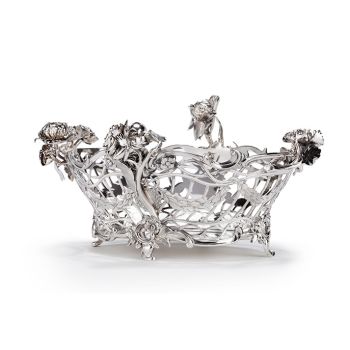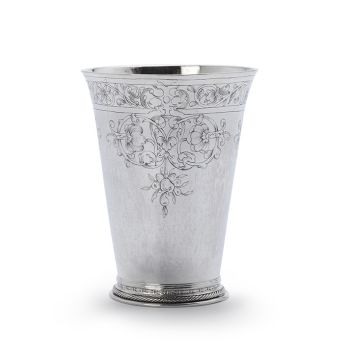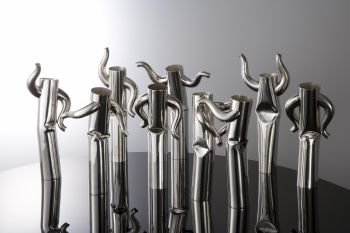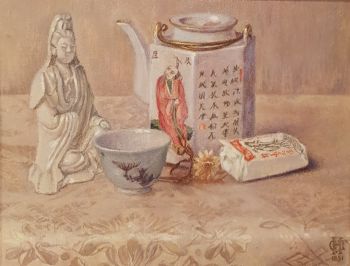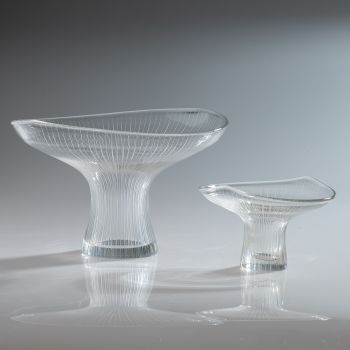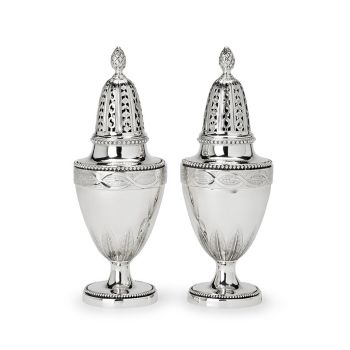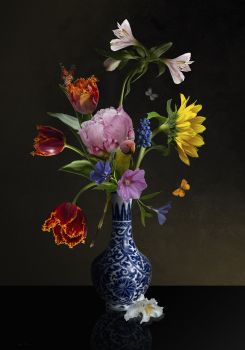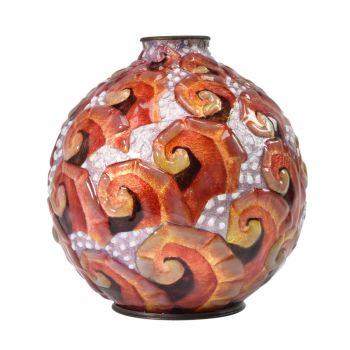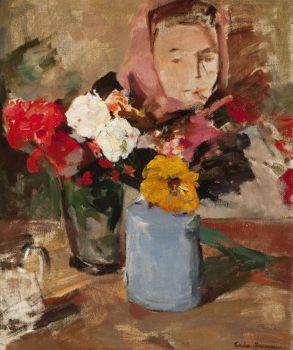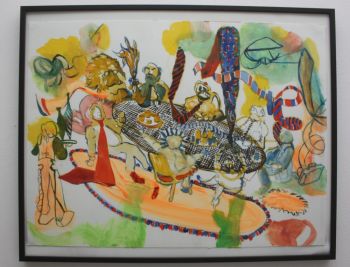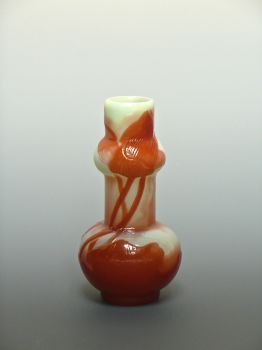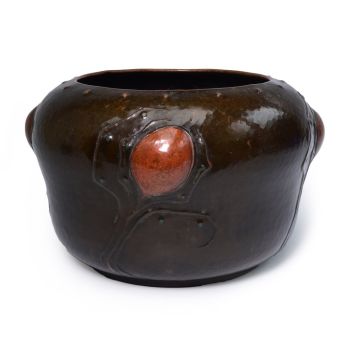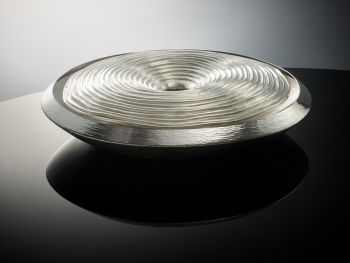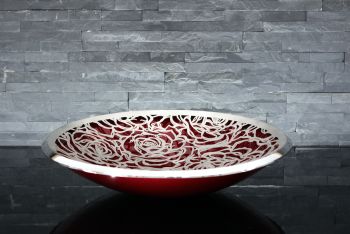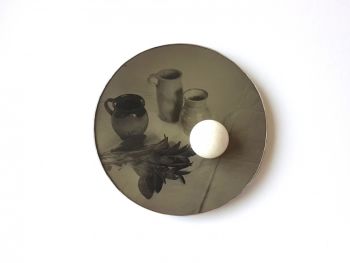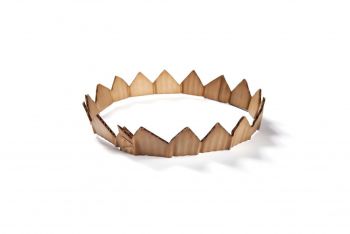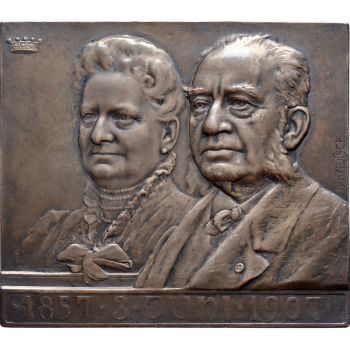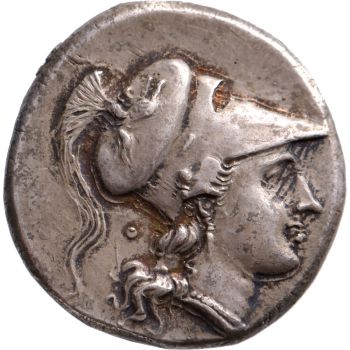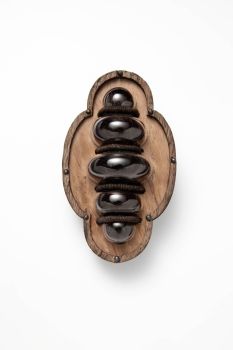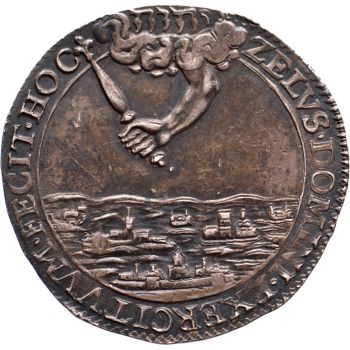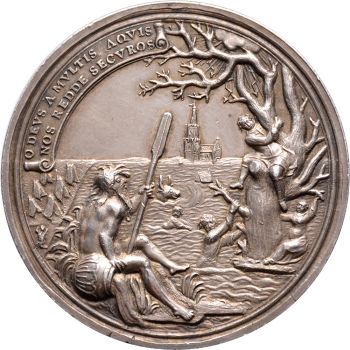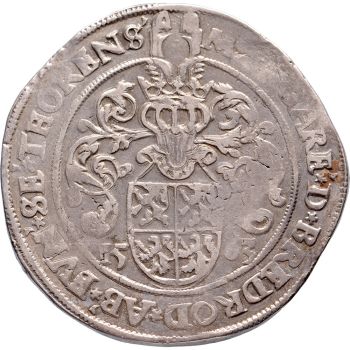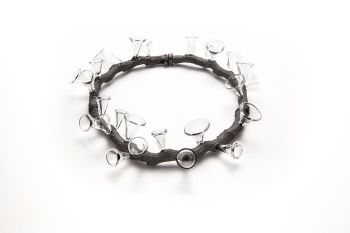Panier avec couvercle, Chine, fin XVIIIe / début XIXe siècle 1780 - 1820
Artiste Inconnu
FiligraneArgent
15 ⨯ 26 cm
Actuellement indisponible via Gallerease
- Sur l'oeuvre d'artSilver filigree, the rim of the cover with insciption reading: 'To Miss Nisbet Hamilton on the occasion of her Marriage, with the respectful good wishes of her Tesidenters on her Winton Estate, September 1888'
Constance Nisbet Hamilton (1843-1920) married Henry Ogilvy.
Height 15 cm, length 26 cm
The origins of Winton House in East Lohan, Scotland, date back to 1480 when George 4th Lord Seton commenced the building of Winton Castle. In 1544 during the War of the Rough Wooing it was destroyed. In 1600 the Seton family were granted Earldom and the first Earl set about restoring the castle. Restoration was completed in 1620 more as a palatial than a defensive house.
After the Jacobite Rebellions the Seton family who backed the House of Stuart lost their title and Winton castle. In 1779 Mrs. Hamilton Nisbet bought Winton House and Estate, restored it and passed it down through females till in 1885 it was inherited by Constance Nisbet Hamilton (1843 – 1920). Through her grandmother Mary, who married Thomas 7th Earl of Elgin of the Elgin Marbles, Constance was related to the Elgin family.
In 1888 Constance married Henry Ogilvy. This certainly was the Scottish wedding of the year, attended by hundreds of nobility and the tenant farmers on her estate. Constance was an extremely wealthy woman owning several estates, castles, houses, villages and at least 40 farms in Scotland and England. This casket was one of the numerous gifts she received as a measure not only of thanks for interest shown and favours conveyed but certainly also as a measure of real affection. Winton House is still owned by the Ogilvy family and is considered a masterpiece of Scottish Renaissance architecture with a large collection of fine furniture and many important paintings. - Sur l'artiste
Il peut arriver qu'un artiste ou un créateur soit inconnu.
Certaines œuvres ne doivent pas être déterminées par qui elles sont faites ou elles sont faites par (un groupe d') artisans. Les exemples sont des statues de l'Antiquité, des meubles, des miroirs ou des signatures qui ne sont pas claires ou lisibles, mais aussi certaines œuvres ne sont pas signées du tout.
Vous pouvez également trouver la description suivante :
•"Attribué à …." A leur avis probablement une oeuvre de l'artiste, au moins en partie
•« Atelier de …. ou « Atelier de » À leur avis, une œuvre exécutée dans l'atelier ou l'atelier de l'artiste, éventuellement sous sa direction
•« Cercle de… ». A leur avis une oeuvre de la période de l'artiste témoignant de son influence, étroitement associée à l'artiste mais pas forcément son élève
•« Style de … ». ou "Suiveur de ...." Selon eux, une œuvre exécutée dans le style de l'artiste mais pas nécessairement par un élève ; peut être contemporain ou presque contemporain
•« Manière de… ». A leur avis une oeuvre dans le style de l'artiste mais d'une date plus tardive
•"Après …." A leur avis une copie (quelle qu'en soit la date) d'une oeuvre de l'artiste
•« Signé… », « Daté… ». ou « Inscrit » À leur avis, l'œuvre a été signée/datée/inscrite par l'artiste. L'ajout d'un point d'interrogation indique un élément de doute
• "Avec signature ….", "Avec date ….", "Avec inscription …." ou "Porte signature/date/inscription" à leur avis la signature/date/inscription a été ajoutée par quelqu'un d'autre que l'artiste
Artwork details
Related artworks
- 1 - 4 / 12
Artiste Inconnu
A silver spoon commemorating Juff’ Margareta van Hoorn1656 - 1694
Prix sur demandeZebregs & Röell - Fine Art - Antiques
1 - 4 / 24Artiste Inconnu
Verre à boire Cristallo façon de Venise1600 - 1650
Prix sur demandePeter Korf de Gidts - Antiquairs
Paulus Franciscus Kromjong
Fleurs devant Arearea Aka (joie) par Gauguin '20th century
Prix sur demandeZebregs & Röell - Fine Art - Antiques
1 - 4 / 24- 1 - 4 / 24

